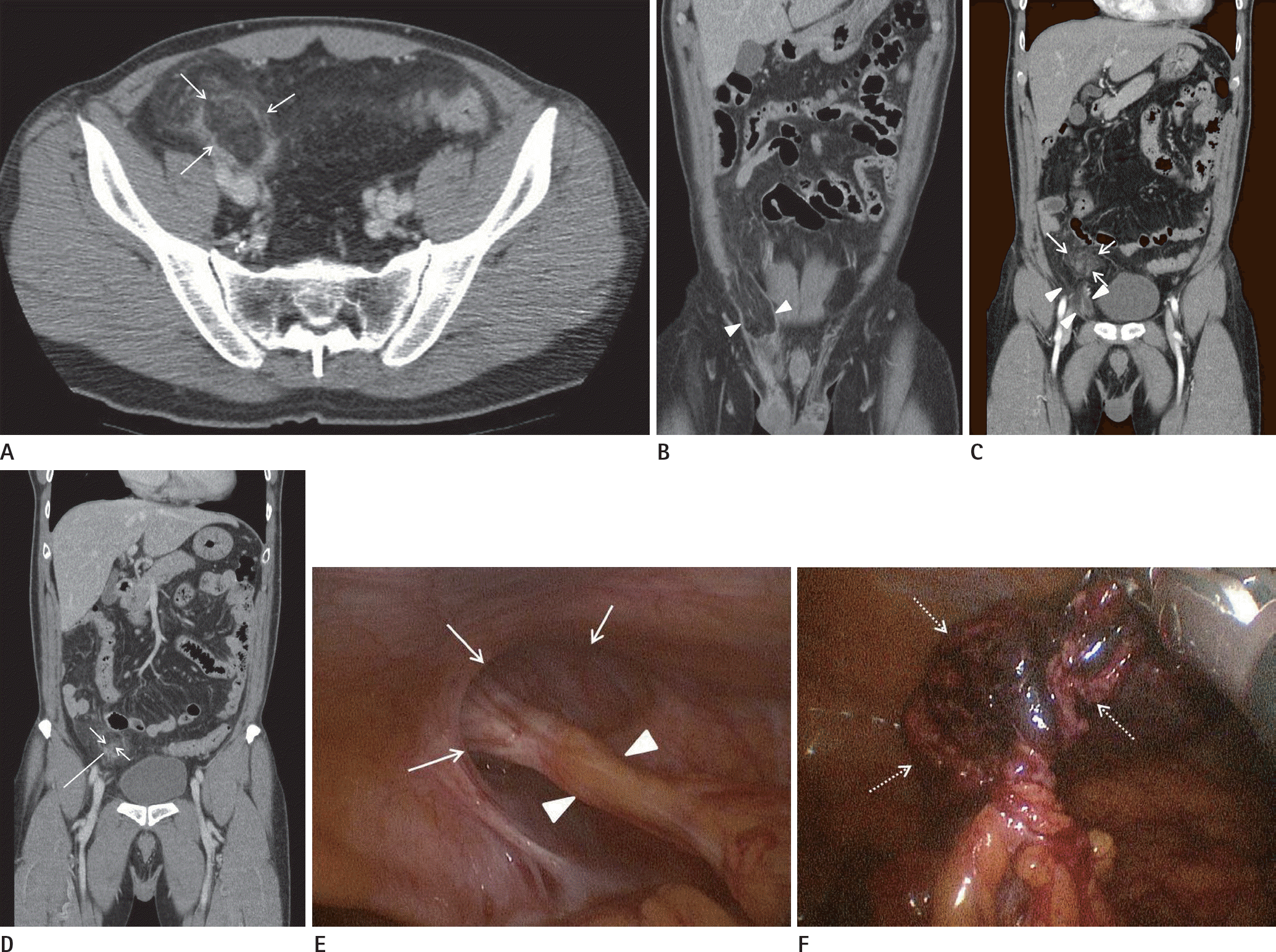This article has been corrected. See "Erratum: Omental Torsion and Infarction with Right Inguinal Hernia: A Case Report" in Volume 78 on page 224.
Abstract
Omental torsion and infarction are rare causes of acute abdominal pain, and it is often difficult to diagnose these conditions preoperatively. There are several reports showing that computed tomography is useful to diagnose these conditions. Here, we report a case of a 59-year-old man with omental infarction due to secondary omental torsion associated with an untreated inguinal hernia. Preoperative comput-ed tomography showed a fatty mass in the right lower quadrant and a right inguinal hernia containing torsion of the greater omentum. He underwent laparoscopic par-tial omentectomy and herniorrhaphy, and the postoperative course was uneventful.
REFERENCES
1.Kayan M., Sabuncuoglu MZ., Çetin M., Çetin R., Benzin MF., Benzin S¸, et al. Omental torsion with left-sided inguinal hernia: a rare preoperative diagnosis. Clin Imaging. 2013. 37:173–175.

2.Hirano Y., Oyama K., Nozawa H., Hara T., Nakada K., Hada M, et al. Left-sided omental torsion with inguinal hernia. World J Gastroenterol. 2006. 12:662–664.

3.Shields PG., Chase KH. Primary torsion of the omentum in a jackhammer operator: another vibration-related injury. J Occup Med. 1988. 30:892–894.
4.Lee SY., Kim DW., Cho JH., Kwon HJ., Ha DH., Oh JY. CT findings of benign omental lesions following abdominal can-cer surgery. J Korean Soc Radiol. 2016. 75:1–11.

5.Katagiri H., Honjo K., Nasu M., Fujisawa M., Kojima K. Omen-tal infarction due to omental torsion. Case Rep Surg. 2013. 2013:373810.

6.Amo Alonso R., de la Peña Cadenato J., Loza Vargas A., San-tos Santamarta F., Sánchez-Ocaña Hernández R., Arenal Vera JJ. Infarction of the greater omentum. Case report. Rev Esp Enferm Dig. 2015. 107:706–707.

7.Kamaya A., Federle MP., Desser TS. Imaging manifestations of abdominal fat necrosis and its mimics. Radiographics. 2011. 31:2021–2034.

8.Kim J., Kim Y., Cho OK., Rhim H., Koh BH., Kim YS, et al. Omen-tal torsion: CT features. Abdom Imaging. 2004. 29:502–504.

Fig. 1.
A 59-year-old man with omental infarction due to secondary omental torsion associated with an untreated inguinal hernia. A. Axial CT scan shows a fatty mass (arrows) with central soft-tissue attenuation and a peripheral halo in the right lower quadrant, adjacent to the sigmoid colon. B-D. On Coronal CT scan (B), a part of the fatty structure extends into the right inguinal hernia sac (arrowheads). The proximal portion of the herniated fatty structure (arrowheads) and the proximal portion of the omental torsion (arrows) are seen (C). A small dot-like soft tissue structure (line) which is suspected to be the torsion knot is noted in the juxta-proximal portion of the herniated omentum with distended venous structure extending into the ovoid-shaped mass with surrounding fat infiltration (arrows) (D). E, F. Laparoscopic finding of the inguinal hernia and infarcted omentum. Defect in the right external inguinal ring (arrows) was found and the greater omentum (arrowheads) entered into the inguinal hernia site (E) and the infarcted omentum (dotted arrows), proximal to the twisted part (F), was seen during surgery.





 PDF
PDF ePub
ePub Citation
Citation Print
Print


 XML Download
XML Download